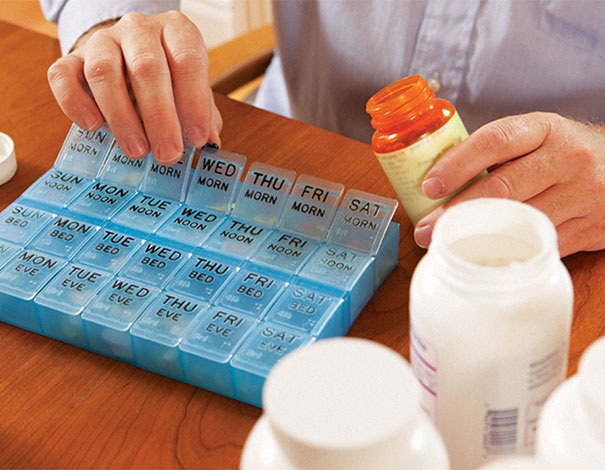Taking your medicines as directed is important for your health, but it’s not always easy to do. Creating an organized system can help. Consider the following tips and pick what works best for you.
Tip 1: List your medicines. Keep a list of all the medicines you’re taking now, and all the medicines you’ve ever taken. Your transplant team may give you a list and update it after every appointment, or you may make your own. The example on the next page can help you get started. Making the list on your computer or mobile device will make it easier to update. Keep a copy of the list in your wallet or purse in case of an emergency. Take the list to your doctor appointments to help you remember the medicines you’re taking.
Tip 2: Make a medicine chart and post it. Create a medicine chart where you keep your pills. A dry erase board (white board) or bulletin board work well. List all your medicines for the day on the board and the times you should take them. When you take each pill, check it off your list. At the end of the day, erase your check marks to start fresh the next day.
Tip 3: Color code your chart. Reading medicine labels can be hard sometimes. To make it easier, mark the label of your medicine containers in different colors (do not color the caps; caps can be returned to the wrong containers). When you take a medicine, mark your chart in the color that matches the label color. After you refill a prescription, give the new container the correct color code
Tip 4: Find a pill case that fits your needs. Depending on your health and treatment plan, decide whether a daily or weekly pill case is best. Sometimes after transplant people have prescriptions that change frequently. This may be especially true in the first few months after transplant, or during treatment for complications such as GVHD. If your prescriptions are changing often, then a daily pill case may be best. Talk to your doctor or pharmacist about what products they recommend. Make sure each pill compartment is big enough to easily hold many pills.
Tip 5: Use a backup reminder. Consider using an electronic organizer, like a smartphone, with a built-in alarm as a backup reminder to take your medicine at the right time. Or ask a family member or friend to help you take the right medicines at the right times.
Questions to ask your doctor or pharmacist
If you’re not sure what to ask your doctor or pharmacist about your medicines, the following list can help you get started.
- Why am I taking this medicine? What is it doing for my health?
- What side effects can I expect?
- When should I take each of my pills?
- Are any side effects warning signs of an emergency?
- Which pills should I take on an empty stomach? Which pills should I take with food?
- What should I do if I forget to take a dose?
- How do I store my medicines? Do any need to be stored in the dark or in the refrigerator?
- Do you have any suggestions for helping me keep track of my medicines and the times I must take them?
- Do you have any recommendations on a pill container to help me organize my medicines?
- I’m having trouble paying for my medicine. Are there any resources that can help me?
- Who should I contact if I have more questions?

